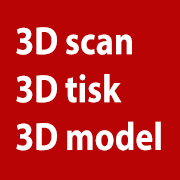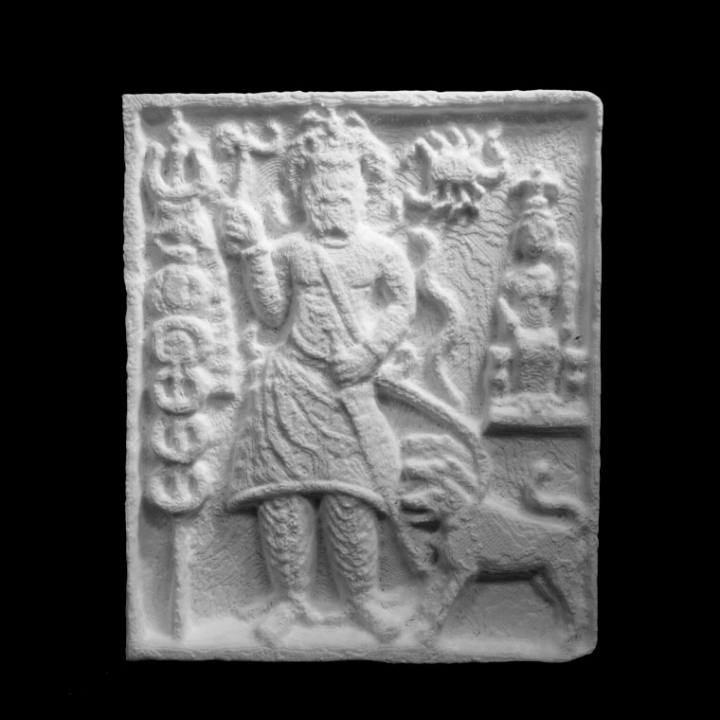
Reklama
3D tiskárny



AONN.cz
Sp┼Ö├ítelen├ę Weby
|
3D modely ARTRelief Image of Hades at The Mosul Museum, Iraq

Title Marble relief of Hades Artist Unknown Date c. 20 BC Medium Mosul marble Dimensions height, 0.89; width, 0.74 metres Accession # MM. 11 Credit Owned by the Mosul Museum This relief work was found encased in the wall of a certain room in the First Temple. From this First Temple, a variety of religious items and effigies were uncovered. The fact that the bodies of the effigies were unearthed from one room and the heads from other is a good indication of the complete plunder and devastation that the armies of Shapur I wrought when they invaded Hatra. This particular relief work, however, seems to have escaped damage simply from the fact that it was encased in the wall. With this relief as unearthed an altar bearing the name of Kanzayw, a man who dedicated the deified image of himself to the First Temple (MM. 34) and is also the donor of this altar. This relief work without any inscription without any inscription has an important meaning in its design and portrayal, and is a great artistic achievement. In the lower right corner of the slate, you will find three dogs with snakes for tails. Having a common body, the head of the first dog is in high relief; that of the second one is in low relief; and that of the final one in line carving. Likewise, although the legs in the foreground are in high relief, those in the background are represented by carved lines. The body, which is common to all three dogs, is painted black, and so is the head of the first (nearest to the viewer) dog. The head of the second dog, on the other hand, is painted red, while that of the last dog is left unpainted. These three dogs represent, as might be easily inferred, the ferocious Cerberus - guardian dog of Hell in Greek Mythology. It is presumed that the man standing in the centre of this relief and holding the leash represents the sinister king of Hell, master of Cerberus. The man in the centre faces front. He has a hideous look with his abundant hair dishevelled and his forehead tied with a thin string. On each side of his head grows a horn indicating his divinity, while in the front part of his head, an eagle with spread wings dominates. The hair, mustache and beard are painted vermillon. He wears an under-garment and a coat reaching down to the knees with the left side in front - the regular Parthian attire. The collar and the lower hem of the coat are equipped with a wide leather lining with arabesque patterns. On both sides of the lower hem, bells in vermilion (not in carved lines but just painted) hang as ornaments. In the centre of the under-garment, a series of small round ornaments, probably pearls, runs down to the point of the shoes. In the right hand raised in front is held a double-edged hatchet, the point of which is, strangely, in the form of a snake cocking its head. A pair of snakes peer from both sides of the forehead, while another pair peeks out from over the shoulders and still another from under the arms. At the foot of the man, another snake raises its head toward the right side. Another couple of snakes, one in relief and the other in verrmilion paint, crawl to the right side of the man, while on the left side, at the food of the flagpost, is another snake in paint. The man loosely wears a leather belt and on his left waist is hung a long sword, on the handle of which rests his left hand. On his right waist, on the other hand, he wears an Akinakes-type dagger. Before the fore and hind legs of the htree-headed dog, a picture of a lion is painted in vermilion, while a lady sits on a leonine pedestal above the three-headed monster. This lad holds a leaf of acanthus in her right hand and in her left she holds a military flag of Hatra. A dove in relief with its wings spread appears on the diadem on her head but the head of the dove is put out of sight by the veil which hangs down along the lady's back. In the centre of the pedestal, a pair of fish, facing in front and in complete symmetry with each other, are painted. The hair, veil and clothes of the lady are all in vermilion paint. There seems to be no objection to identifying this image with that of the Goddess Atargatis, who was woshipped as one of the Semitie goddesses of Syria at the time. Having her main seat of worship at Hieropolis-Banbyce near Aleppo, this goddess of fertility was in great popularity among the city states of Semitic origin. The goddes is always accompanied by the crescent, the sun and a lion. The dove and the fish, on the other hand, are the standard sacrifice to the goddess. Moreover, the legend tells that the goddess fell in the pond and turned into a fish. From these tell-tale stories, it seems fairly safe to conclude that this particular image is that of Atargatis. The next point to consider is the relation between the goddess and the man in the centre. In the mythology of the Semitic people, the consort of Atargatis is Hadad. This god of thunder, whose other name is Adad or Addu, is usually represented with a three-prolonged halberd and a hammer in his hands. This god along with Atargatis was greatly worshipped in the Semitic city states in the Orient, including Hieropolis. Here we are squarely confronted with a big problem. If the man is the master of Cerberus- the three-headed monster dog- he could be nobody by Hades, the god of Hell. If he is a consort of Atargatis, on the other hand he could be nobody by Hadad. This leads us to another question - it is not possible that the Semitic god by the name of Hadad (or Adad or Addu) is mistakenly indentified with the Greek God Hades or vice versa! One key to the question is the fact that the Orient of the time was a vast conglomeration of the civilizations of both East and West, and it was not infrequest that one god was identified with another and that the attributes of one god were easily transferred to another. Every kind of different combination was therefore possible in the design and portrayal of gods and goddesses. The only probable answer therefore seems to be that the images of the Greek God Hades and the Semitic God Hadad overlapped and produced an overall design which is hard to construe at the present day. Now let us take another look at the whole picture. At the extreme left, Hatra's military standard - a pole with seven symbols and a ribbon - is carved. Except for the medallion bearing the bust of a young man (sun-god) and a crescent (moon-god), the other symbols are at present unintelligible. On top of the flag pole, there rests an eagle with folded wings. In the upper right hand corner, a relief of a scorpion is represented, while in the lower left another scorpion is painted in vermilion. The origin of the simplified sculptural technique in which - to take an example of this particular work - the third head of the dog is carved in lines, while its hind legs are in paint is now obscure. This particular technique, however, became quite a vogue in the Sasanian Dynasty. For example, in the portrayal of Goddess Anahita on the four sides of a silver pitcher now owned by the Archaeological Museum in Tehran, major parts of such attributes as the cock, dog, and lions are in relief, while the background legs of the birds and animals are merely in carved lines. Although there are technical differences between the two, chiefly because of the different materials used, the idea of simplification of perspective is equally present in both artefacts. source; The Artifacts of Hatra and Parthian ArtAuthor(s): Shinji Fukai Source: East and West, Vol. 11, No. 2/3 (June - September 1960), pp. 135-181Published by: Istituto Italiano per l'Africa e l'Oriente (IsIAO) | Download a 3D printable file for free or get it printed." /> n├íhodn├Ż v├Żb─Ťr model┼»
|
©Ofrii 2012
| |||